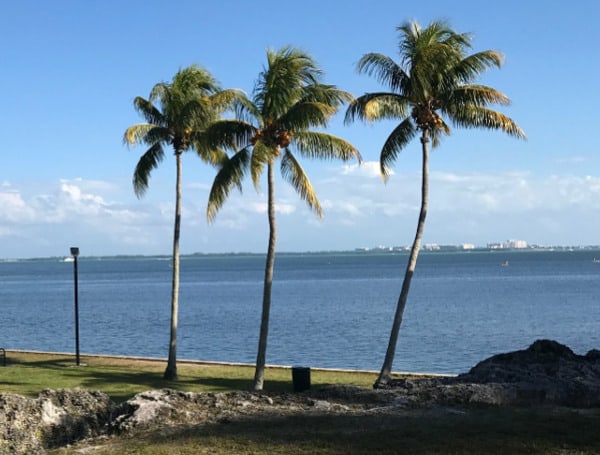The city of Miami spent almost $5 million to upgrade a popular public park. The project was intended to promote “resiliency,” the latest buzzword in climate-change politics.
The initiative, known as the “Alice Wainwright Park Seawall and Resiliency” project, sought, as the name implied, to fortify the park from the “creeping realities of sea-level rise,” as WLRN in Miami last week. The park sits on bucolic Biscayne Bay.
The project also included a waterfront walking path, and the planting of dozens of native trees to replace 69 invasive Australian pines that were axed and removed.
So green-energy and climate-change friendly was the plan that included a $350,000 line time for the installation of 53 solar-powered street lights in the parking lot.
But a question arose of whether those were necessary. Alice Wainwright Park closes at sunset.
“The public,” WLRN noted, “cannot benefit from the new lights.”
Albert Gomez, a co-founder of an anti-climate change activist group called the Miami Climate Alliance, told WLRN the lights went in to keep the homeless out.
“Police officers like to patrol and not get out of the car and not have to go through the park in the dark with flashlights,” Gomez said. “They would prefer to have lights and be able to spot the homeless people and go and get them out.”
About half the funding for the park’s improvements came from a special bond fund city voters approved in 2017. That account is intended for “resiliency” projects to keep the sea back.
“Taking homeless people’s ability to sleep in a park, how is that adding to resiliency?” Gomez wondered.
Gomez criticized the streetlights, saying the expense took bond money away from other projects dealing with climate change.
The city, it seems, went green to use the green.
“The way they qualified it is because they are solar lights. Therefore by deploying solar lights, in air quotes, you meet the checkbox in their checklist for meeting the resiliency criteria,” Gomez told WLRN.
“It’s a perfect example of how when you don’t have a selection criteria, things can get ‘ridered’ onto existing renovation projects that aren’t really truly resilient.”
It’s also an example of the government’s well-worn habit of bait and switch.
Visit Tampafp.com for Politics, Tampa Area Local News, Sports, and National Headlines. Support journalism by clicking here to our GiveSendGo or sign up for our free newsletter by clicking here.
Android Users, Click Here To Download The Free Press App And Never Miss A Story. Follow Us On Facebook Here Or Twitter Here.

